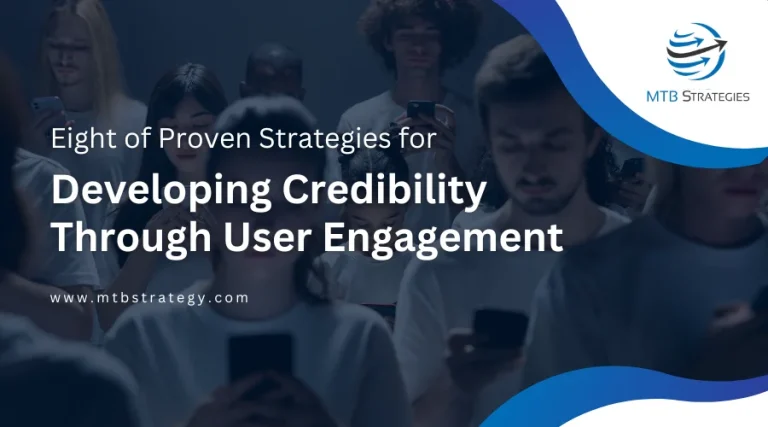Customer acquisition cost (CAC) is a crucial business indicator that exposes your firm’s financial health and informs your entire marketing strategy. When you evaluate how much you spend to attract clients, you may optimize your marketing funnel and reach a more considerable profit margin.
Furthermore, lowering acquisition costs allows you to reinvest the savings in better experiences to increase retention.
Why is It Important to Calculate the CAC?
Knowing how many potential clients are willing to spend on your products and services is critical. However, this is only a partial picture of your company’s health. The cost of obtaining a new customer lets you better estimate your brand’s financial health.
The lower your client acquisition costs, the more robust your revenue model will be. That’s fantastic news if you need to raise money. For example, investors will compare your brand to competitors with a similar business strategy if you run a SaaS startup.
However, you should also grasp the relationship between your acquisition cost and your paying customers’ lifetime value. The ratio of CAC to customer lifetime value (CLV) is a vital indicator of the health of your firm.
High-profit margins and a high CLV-to-CAC ratio allow your company more freedom to adjust to dynamic market conditions.
Meanwhile, a low CLV-to-CAC ratio indicates pricing issues, internal bloat, or inefficient processes. You won’t have the leeway to be more aggressive on price to acquire a substantial new client.
Furthermore, a low ratio can imply potential cash flow issues that could jeopardize your company’s financial foundation. If the balance is negative, you’ll require a significant financial overhaul.
How to Calculate CAC
Using the following formula, you can easily calculate your customer acquisition cost:
CAC = Total Cost of Sales & Marketing divided by Total Number of Clients Obtained
Assume you spend $1,000,000 on sales and marketing each quarter. You acquire 10,000 new clients throughout this time. In this situation, your CAC would be $100. This is a simple computation.
CAC Per Digital Marketing Channel Comparison
Compare your acquisition expenses across digital marketing channels and specific marketing activities to optimize them.
Choose your attribution model to determine which channel your consumer is coming from. This could be either first-touch or last-touch attribution. You can also use multi-touch attribution, which is more precise. You can use multi-touch attribution to weigh each touch point equally or apply weighted attribution determined by the influence of each touch point.
First-Touch Attribution: With first-touch attribution, the channel that got the consumer first (typically top of the funnel) gets the credit. This approach helps you understand what motivates the first touchpoint in a conversion route.
Last-Touch Attribution: Which channel made the sale? This is the final step of an attribution model. Many analytics platforms include last-touch attribution as a default setting.
Equally-Weighted Multi-Touch Attribution: This model assigns the exact cost and value to each consumer touchpoint. The simplicity of this model is its advantage. You will not, however, receive valid, accurate CAC by channel.
Weighted Multi-Touch Attribution: This is the most accurate model. Divide the conversion funnel into touchpoints and assign a value to each based on the value of the individual channel. It would be most beneficial for your computations if you analyze the actual value. However, some businesses rely on market mix modeling to assist them in assigning a value to each channel, providing a reasonable estimate.
With your attribution data in hand, follow this step-by-step guide to comparing marketing channels for CAC.
1. Establish the Channels
First, go over your trackable channels and enter them into a spreadsheet. These channels may include search engine optimization (SEO), email marketing, social media, and content marketing.
2. Calculate Channel Expenses
Examine each channel and validate its expenses. Staffing, agency fees, consultant fees, resources, and advertising costs should all be considered.
3. Determine the ROI per Channel
Determine the applicable channel expenses based on your analytics, tracking, and customer data after deciding on your attribution strategy.
How to Reduce Customer Acquisition Expenses
No one has ever said, can I pay more? The same is true for CAC. Two primary methods for lowering your cost per acquisition are reducing spending and improving customer retention.
Review Budget Plans
Focusing on organic channels is one of the best strategies to cut marketing costs. Replace pay-per-click (PPC) advertising with SEO.
The immediate effects of PPC seduce many brands, but it is costly. And once you stop paying for the commercials, those advantages vanish. Furthermore, because of the prices, there are more viable alternatives than PPC at the top of the funnel.
On the other hand, organic search has a lengthy lifespan and gives compounding ROI for years rather than the brief duration of a sponsored marketing campaign. This, in turn, lowers your costs for attracting new consumers. According to Google, the ROI from organic search is 5.3X that of paid search.
Make Use of Other Organic Channels
Reduce your marketing budget beyond organic search by utilizing other organic channels. These may include content marketing, email marketing, social media marketing, etc.
Improve Your Sales Funnel
You may have a lot of visitors to your website, but you need to enhance your eCommerce conversion rate. Examine your site analytics to see where users are leaving your site. Conduct a content assessment and keep an eye on conversion rates. These indicators will aid in the optimization of your conversion funnel, the streamlining of the purchase process, and the improvement of client acquisition rates.
Make Use of Sales Tools
Add a marketing automation solution to your marketing technology stack if you haven’t already. This type of platform identifies areas for improvement in the client journey. You can track the ROI of your marketing channels while streamlining your audience engagement methods.
Enhance Your Customer Retention
Next, concentrate on lowering client churn. Repeat consumers spend 67% more in the third year of their connection with a company than in the previous two years. It costs five times more to catch a new customer’s attention than to keep an existing one. As a result, increasing client retention leads to increased earnings.
Optimize Customer Acquisition Costs
There are numerous methods for increasing lifetime value. Upselling and cross-selling include subscription services, loyalty programs, or a good customer nurture program.
CLV identifies which client categories provide the most long-term value to your company. This is significant because the value extends beyond a single transaction or campaign. The longer you keep a customer, the better your margins and CAC will get.
CLV data can be used to direct your new client acquisition strategy and to deploy retention efforts strategically.
The better your customer lifetime value, the more profit you can invest in new customer acquisition. Your new customer accounts will then expand as well. The relationship is cyclical.
Train your customer success and customer service employees on selling methods to improve your CLV. They deal with your existing customers daily. Therefore, their interactions can influence brand loyalty, churn rates, and, eventually, CAC.






